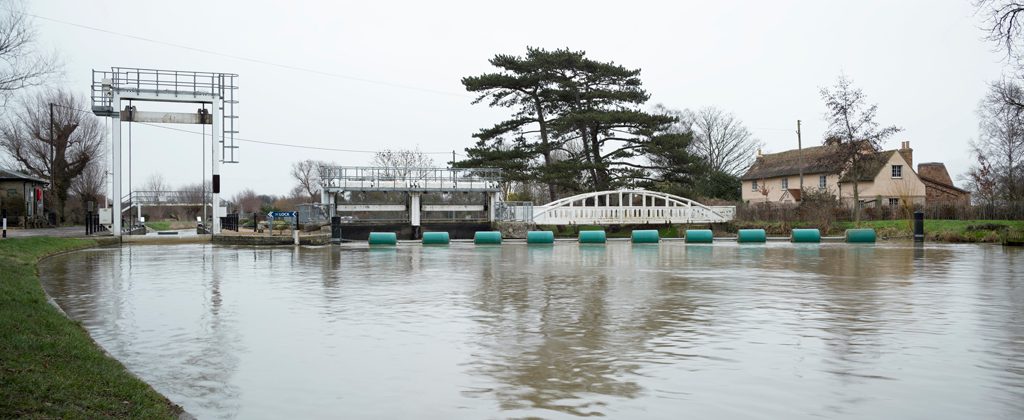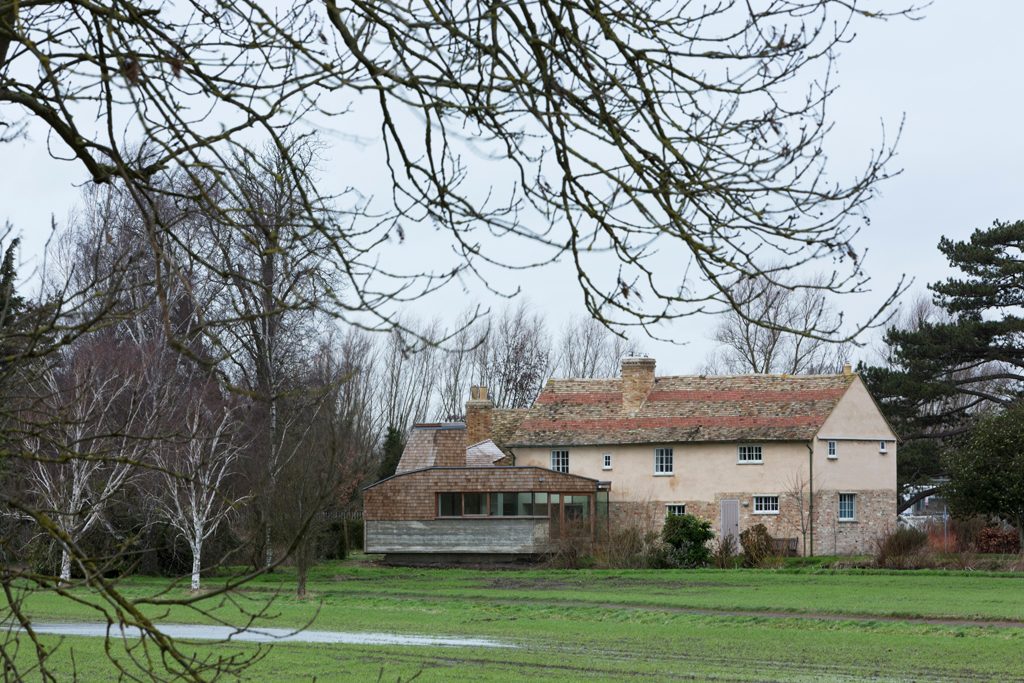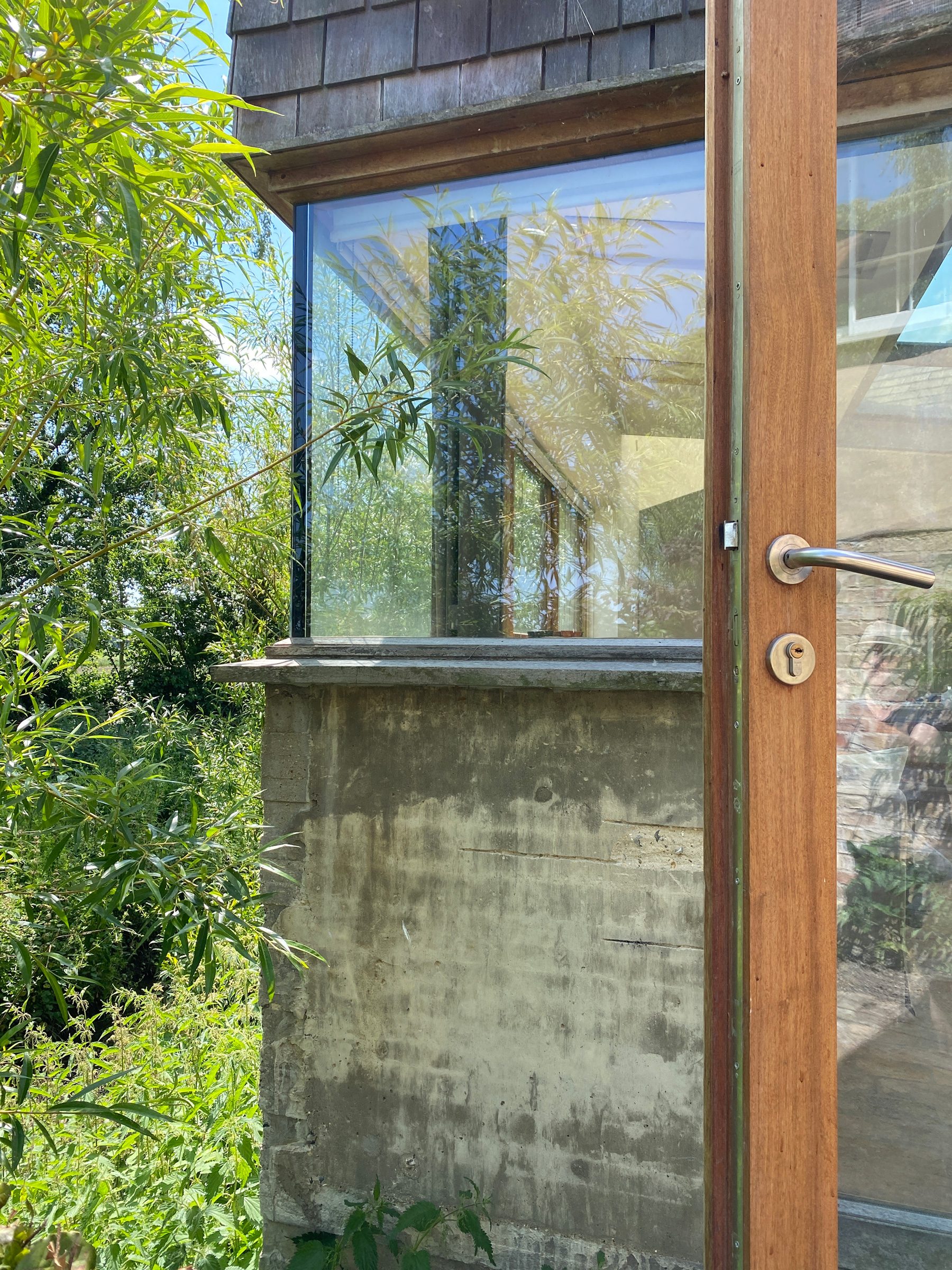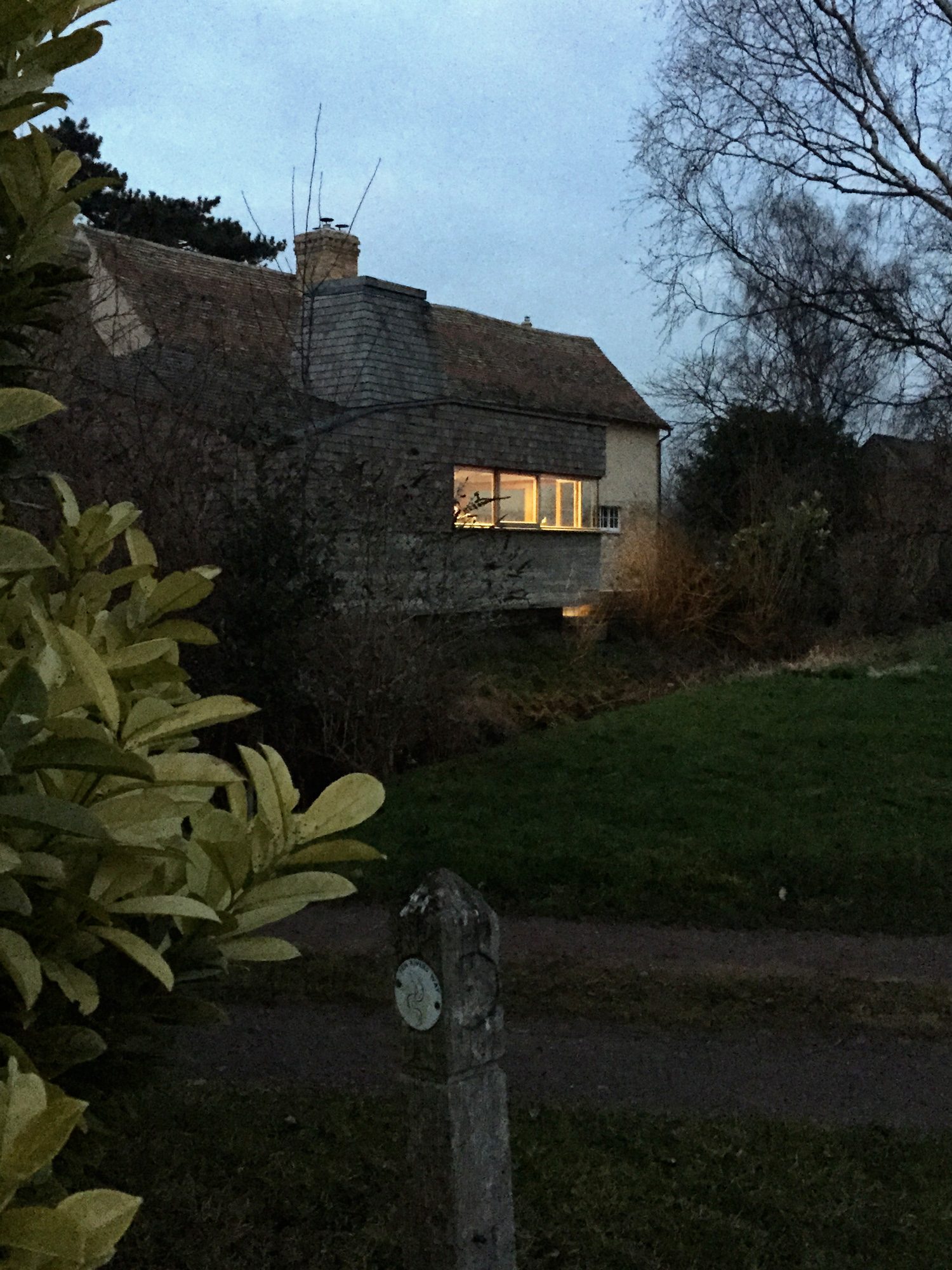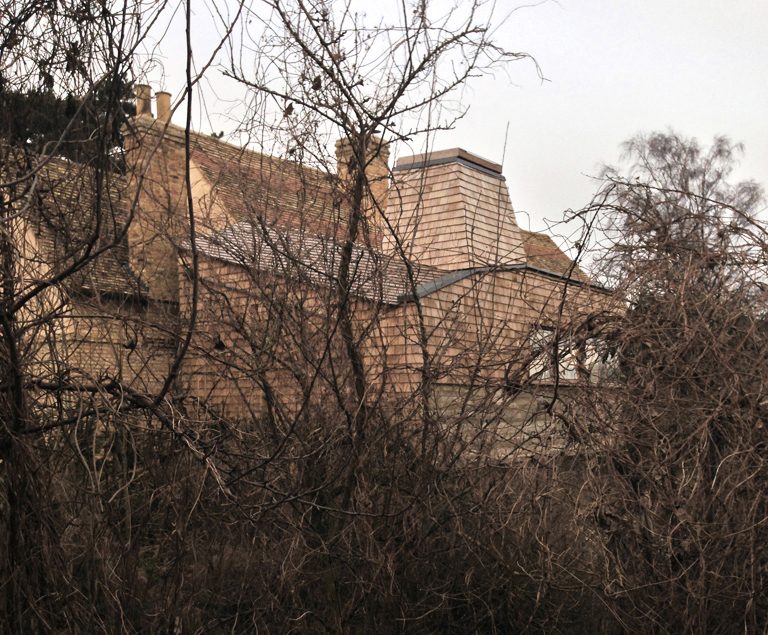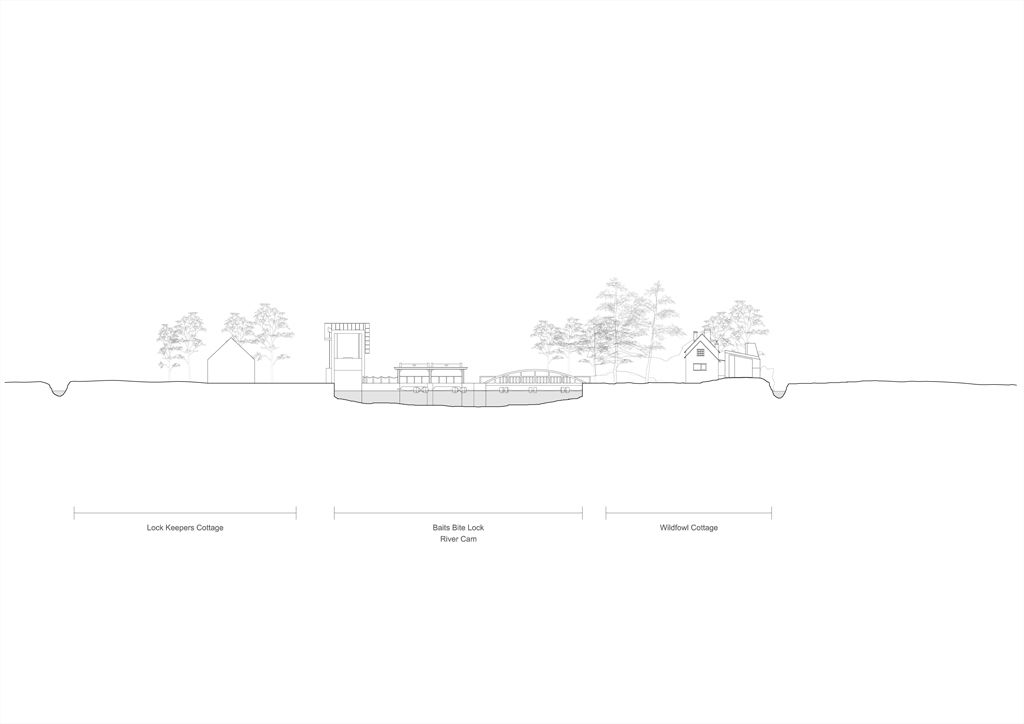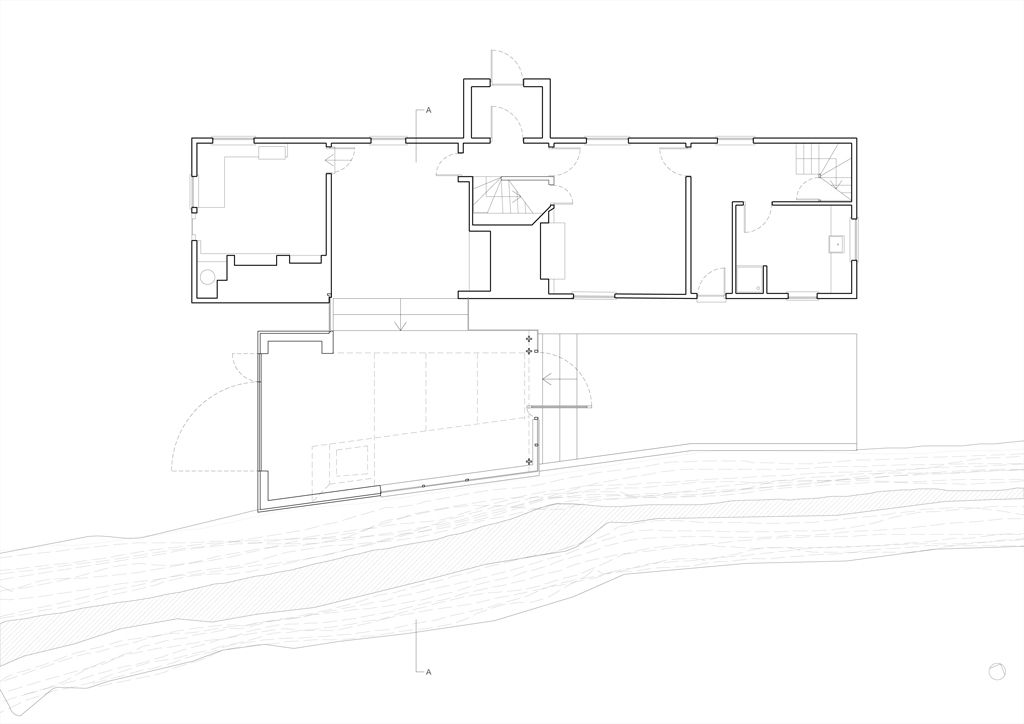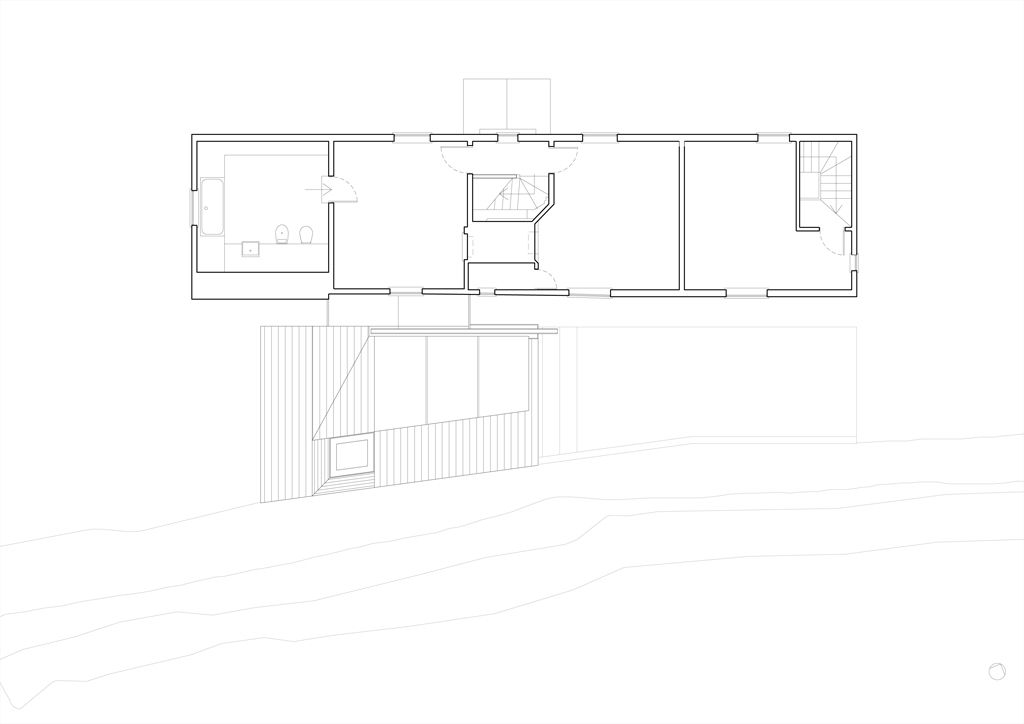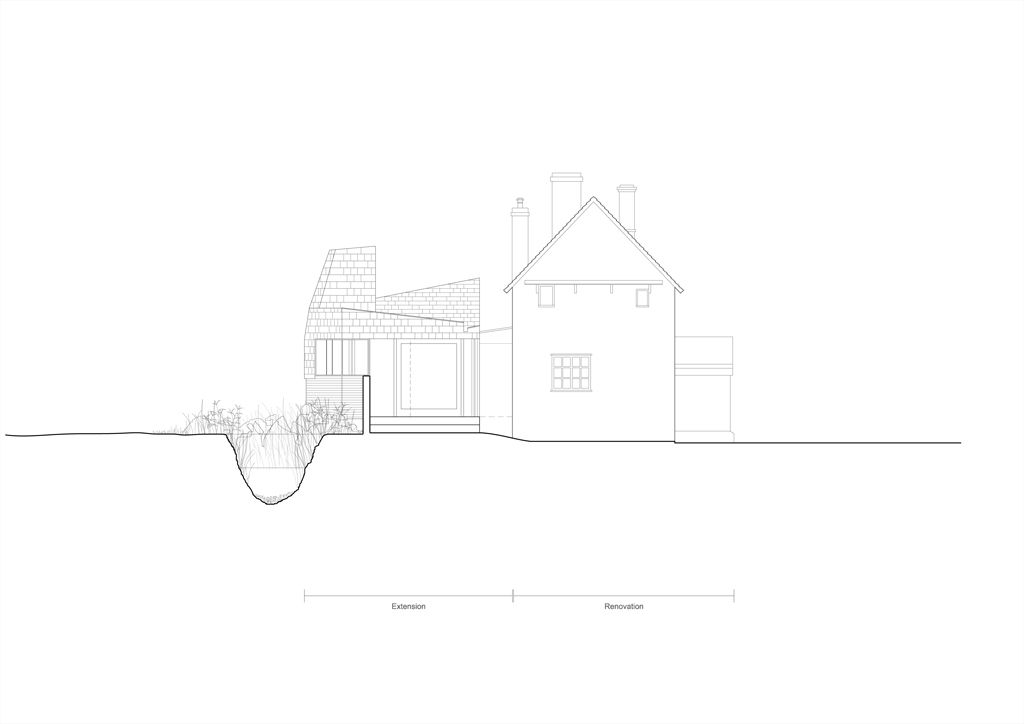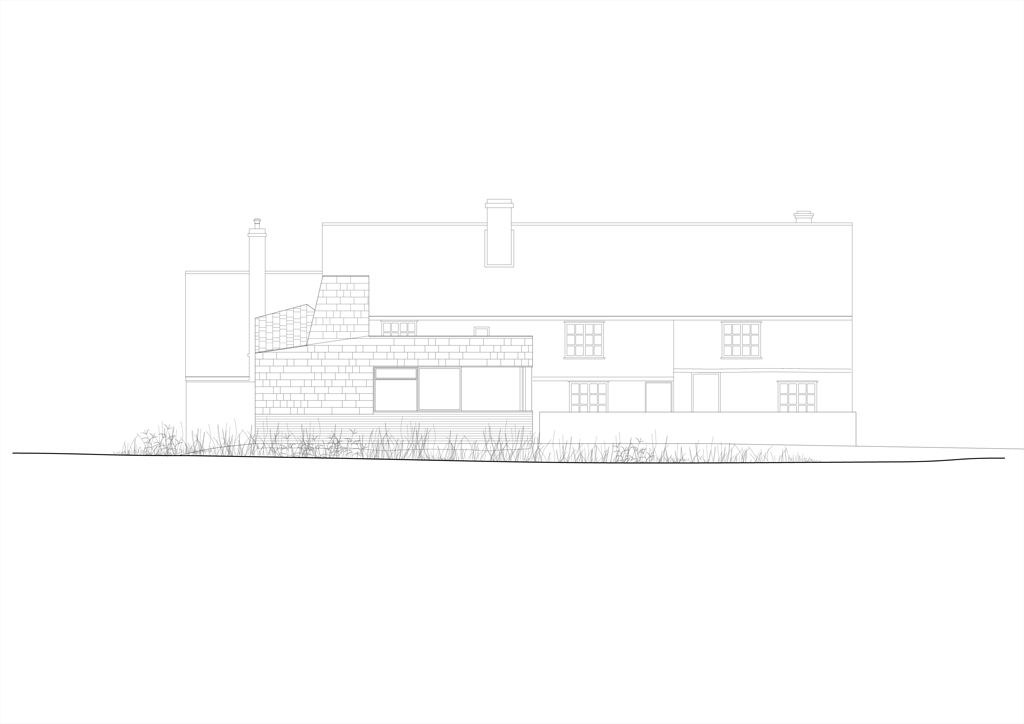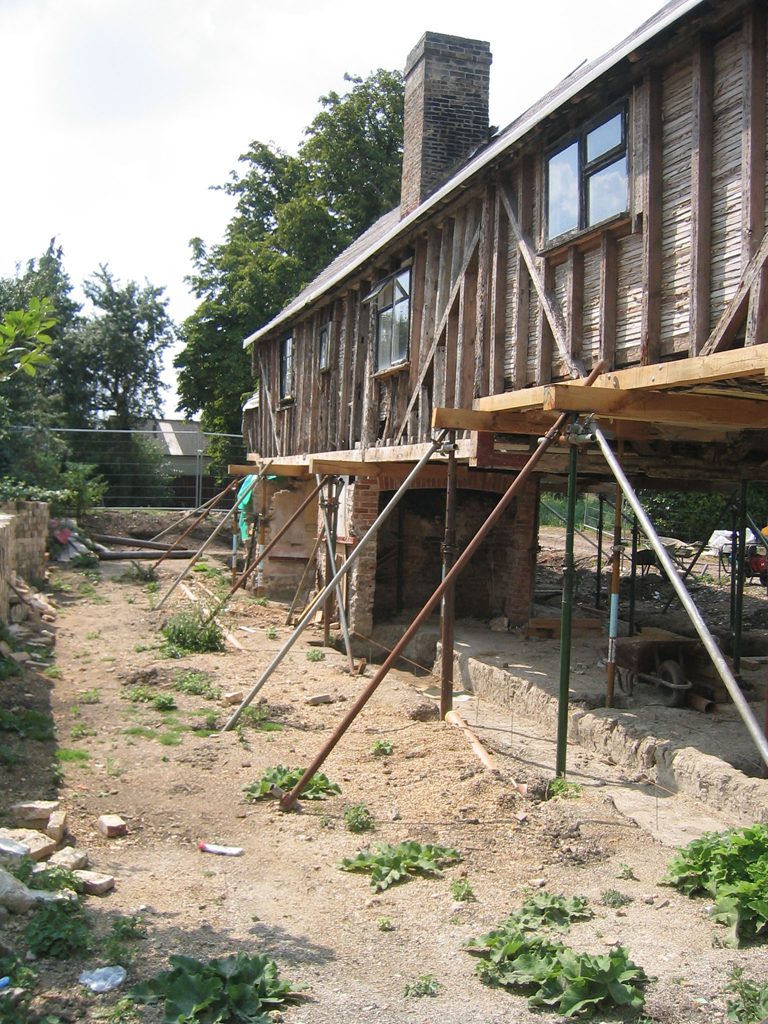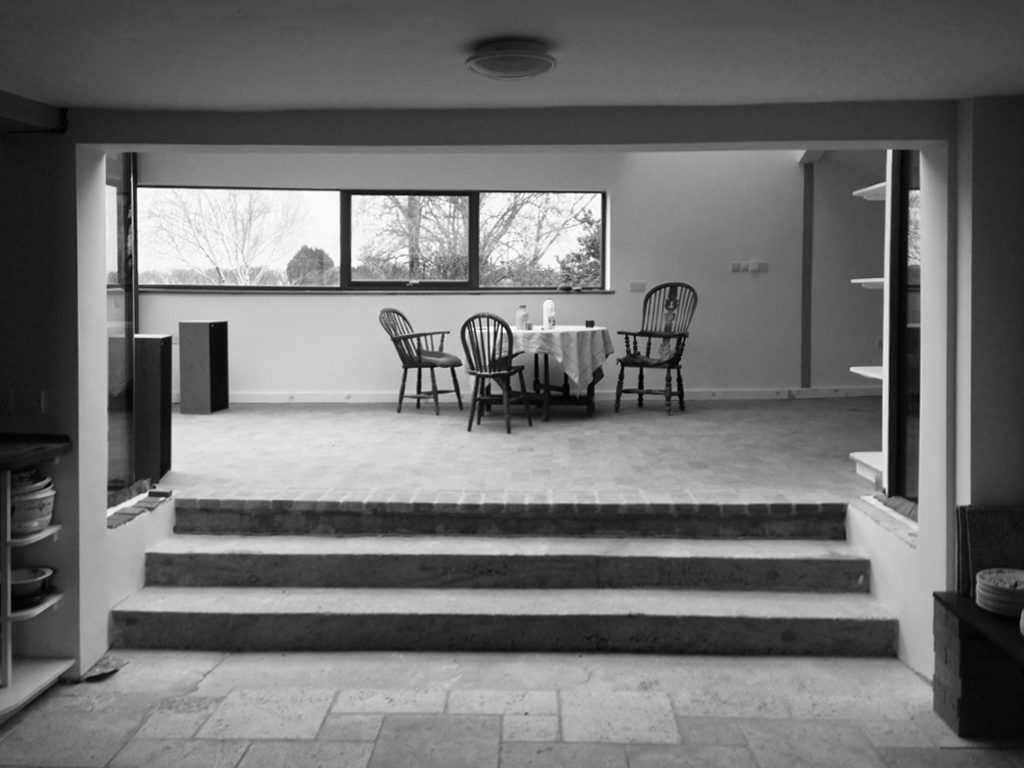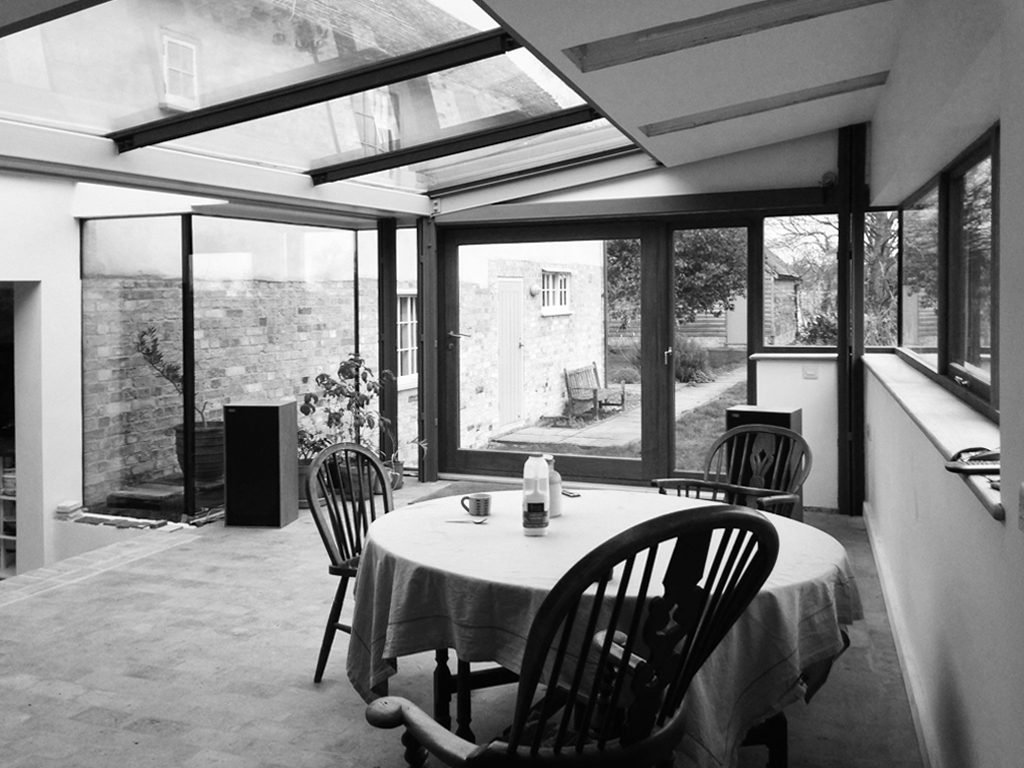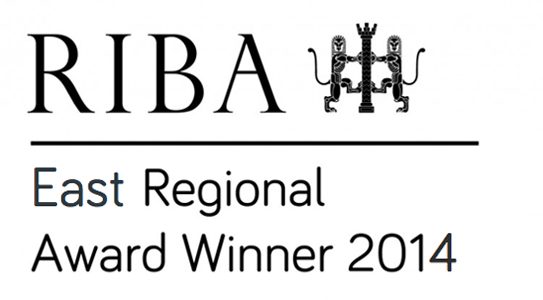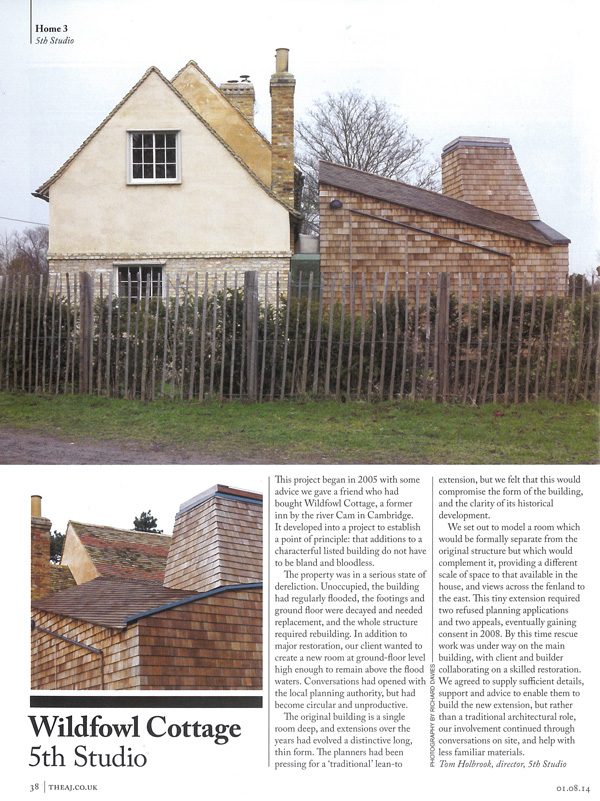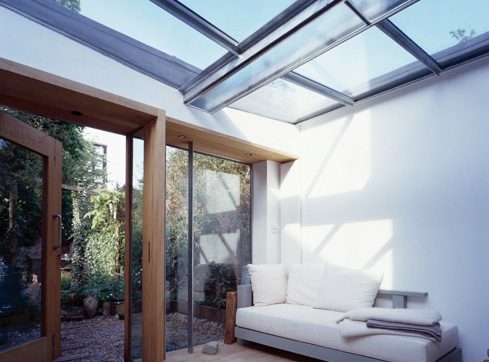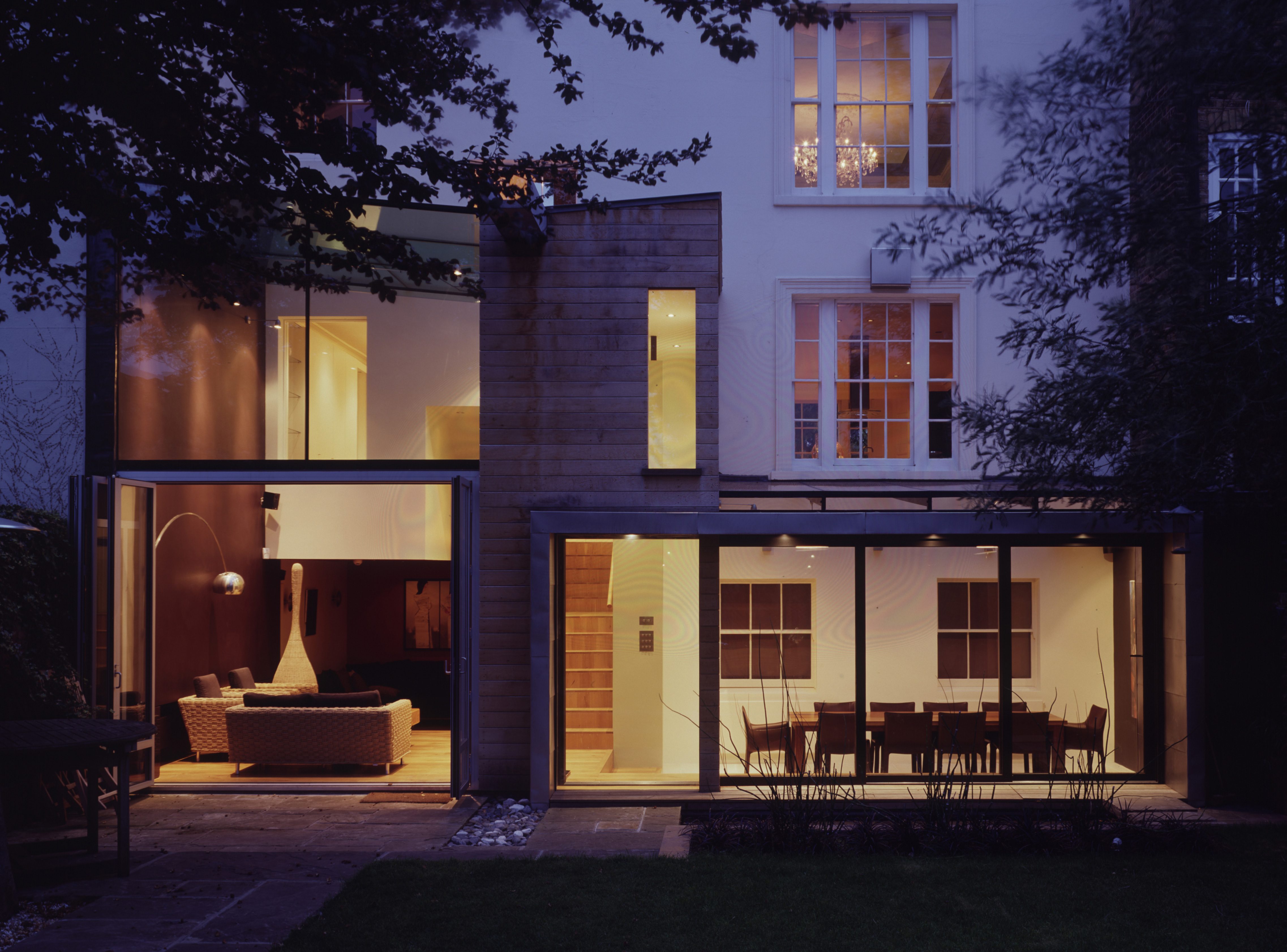Designed to compliment the rescue of a derelict former waterside inn, this extension provides a new room acting as a refuge above the 100-year flood level.
Through an exceptionally long gestation, with prolonged exchange with the planning and conservation authority, a single room has been created which responds carefully to the rich contexts of the listed house and the remarkable surrounding landscape.
The room is thought of as a contemporary interpretation of a vernacular building and demonstrates that careful modern design is appropriate in the context of a listed building. It rejects the notion that conservation work should be bland and bloodless.
